It is June, but it doesn’t feel like summer. Instead of kayaking through the salt marshes near my home in Gloucester, Mass., swimming off the sandbars, and welcoming home our vacationing adult children, I am waiting out an intense Arctic storm in Nunavut, Canada’s northern-most territory. I am with a team of field scientists on the remote tundra of East Bay, Southampton Island, at the head of Hudson Bay, just below the Arctic Circle. The temperature is well below freezing; the wind chill makes it feel colder. I am wearing every piece of cold-weather clothing I have—two layers of long underwear, fleece pants and vest, wool sweater, wind pants, and parka—and if I don’t keep moving, I’m still cold.
I’ve come here to write a book about a bird, Calidris Canutus rufa, the red knot—a small sandpiper weighing no more than a coffee cup. One of six subspecies worldwide, rufa red knots migrate along the length of the Earth, each year flying an almost inconceivable 20,000 miles along the edges of two entire continents. Their numbers have dropped precipitously. In December 2014, the United States Fish and Wildlife Service listed them as threatened under the Endangered Species Act, the first bird in the U.S. listed because global warming imperils its existence. They are losing their shoreline homes due to rising sea level and storm surges, and a warming ocean may lead to a mismatch between the times birds arrive at their feeding grounds and the peak production of their food.
I’ve followed the birds on their long journey, beginning on the remote beaches in Tierra del Fuego, off the southern tip of South America, and moving north through touristed beaches in Argentina, hunting reserves in South Carolina, slivers of sand in Delaware, and then, finally, to their nesting grounds in the Arctic, where if all goes well—and it often doesn’t—the birds bring forth a new generation to begin a new migration. Wellesley’s Mary Elvira Stevens Traveling Fellowship, Canada’s National Wildlife Research Centre, the Canadian Wildlife Service, the Curtis and Edith Munson Foundation, the Norcross Wildlife Foundation, and the Ocean Foundation enabled me to accompany knots to their faraway, difficult-to-reach homes, and to witness the challenges faced by shorebirds on a rapidly changing and increasingly fragile sea edge.
Our days are quiet, filled with singing birds, geese flying overhead, and the occasional sandhill crane calling in the distance. We are alone, but far from lonely.
The Rigors of the Arctic
More than one biologist warned me that the Arctic is not an easy place. I’d traveled extensively researching the book and met many dedicated people determined to give these birds safe harbor. I was thrilled and honored by the opportunity to accompany scientists to the shorebird nesting grounds in East Bay, and to experience firsthand the inhospitable land where the birds nest.
At the same time, I wondered what it would be like living with strangers in cramped, rustic quarters on a snowy isolated ridge seemingly in the middle of nowhere. Once the pilots dropped me off, I wouldn’t be leaving for three weeks. To help prepare, I was required to take a Red Cross CPR course and asked to obtain a Massachusetts gun license to support my application for a temporary gun license in Canada. To do that, I spent six hours learning about handguns, taking a written test, and shooting pistols and revolvers. I hadn’t held a gun since taking riflery at summer camp 50 years before, but by the end, I had a license to carry a large-capacity firearm.
In Ottawa, I learned how to fire a 12-gauge shotgun. One of the Arctic’s greatest concentration of polar bears lives in the Foxe Basin, where we’d be, and record losses of seasonal sea ice triggered by global warming were bringing them ashore earlier in the season to look for food. The shotgun kicked; I flinched at the recoil every time. My poor aim earned me a private instructor. We didn’t expect polar bears in the camp, but we needed to be prepared.
All of our team are veterans of the rugged Arctic, except for me. Research scientist Grant Gilchrist runs the East Bay shorebird camp and the eider-duck research camp on a nearby island. Josiah Nakoolak, a resident of Southampton Island, knows weather, ice, and bears. Four highly capable young women carry out the bulk of the shorebird survey work. Alannah Kataluk-Primeau, from Pond Inlet on Baffin Island, 600 miles north of East Bay, knows the Arctic in ways we never will. Meagan McCloskey, a biologist and long-distance cyclist, was in the Navy Reserves; Kara Anne Ward, also a biologist, would be going to medical school; Naomi Man in ‘t Veld, a former science teacher, would be pursuing a graduate degree in social work. They all know birds, are physically fit, and are good shots. As friendly as they are, meeting them compounded my mounting concern about whether I had the endurance to manage this trip and whether I’d pull my weight or burden them. The oldest, 30, is half my age, the youngest, 20. I’d prepared by running three or four miles a day on hilly terrain or wading two miles through sea water up to my thighs. I hoped it would carry me through.
Waiting Out the Storm
In Nunavut’s capital, Iqaluit, on Baffin Island, we gather supplies for the field season: gasoline, kerosene, and propane for the ATV, snowmobile, stove, generator, and heater; radios, satellite phone, field computer, GPSes, batteries, and charger; tools to fix anything that might need fixing; sleeping bags; research equipment; survival packs; guns and ammunition. In the supermarket, we try to estimate how much fresh produce we can keep until it rots, how much meat we can keep until it thaws in the Arctic summer, and how much canned or packaged food we will need once we’ve finished the fresh supplies. We select crates of cabbages, carrots, potatoes, oranges, and apples; chicken and bacon to bury in a metal chest; pancake mixes and eggs; canned vegetables and spicy sauces; peanut butter and energy bars.
We have time to explore. The weather map shows a blizzard blanketing Southampton Island. The bush pilots aren’t flying. The eider-duck researchers have been grounded here for over a week. We’re all staying in old U.S. Army and Air Force barracks. The base, built during World War II, was maintained during the Cold War when the U.S. constructed the DEW (Distant Early Warning) Line, a series of radar stations across northern Canada designed to detect hostile planes from Russia. The base is now closed, the airport converted to commercial and civilian use, but from my window, I see a large U.S. military plane on the runway. As global warming melts polar sea ice, opening northern shipping routes through the Arctic, the United States continues to have a strategic interest here.
Iqaluit is a sleepy town, its dirt roads turning to mud in the spring thaw. In the evenings, the scientists go for beers at the Kickin’ Caribou Pub or to the movies. The evenings are long and the choices few: Some see Snow White twice.
Inuit from across the Arctic are in town to celebrate the opening of Iqaluit’s Anglican church, rebuilt after a fire, and to dedicate a new Inuktitut translation of the Old Testament, more than 30 years in the making. A priest invites me to the ceremony. The church is shaped like an igloo, the lectern built in the form of an upright komatik—the Inuit sled once pulled across the ice by dog teams and now by snowmobile. The offering bowls are soft, handsome sealskin, and the cross is made from the ivory tusks of narwhals. The church is full, the congregation spilling out of the sanctuary into the foyer.
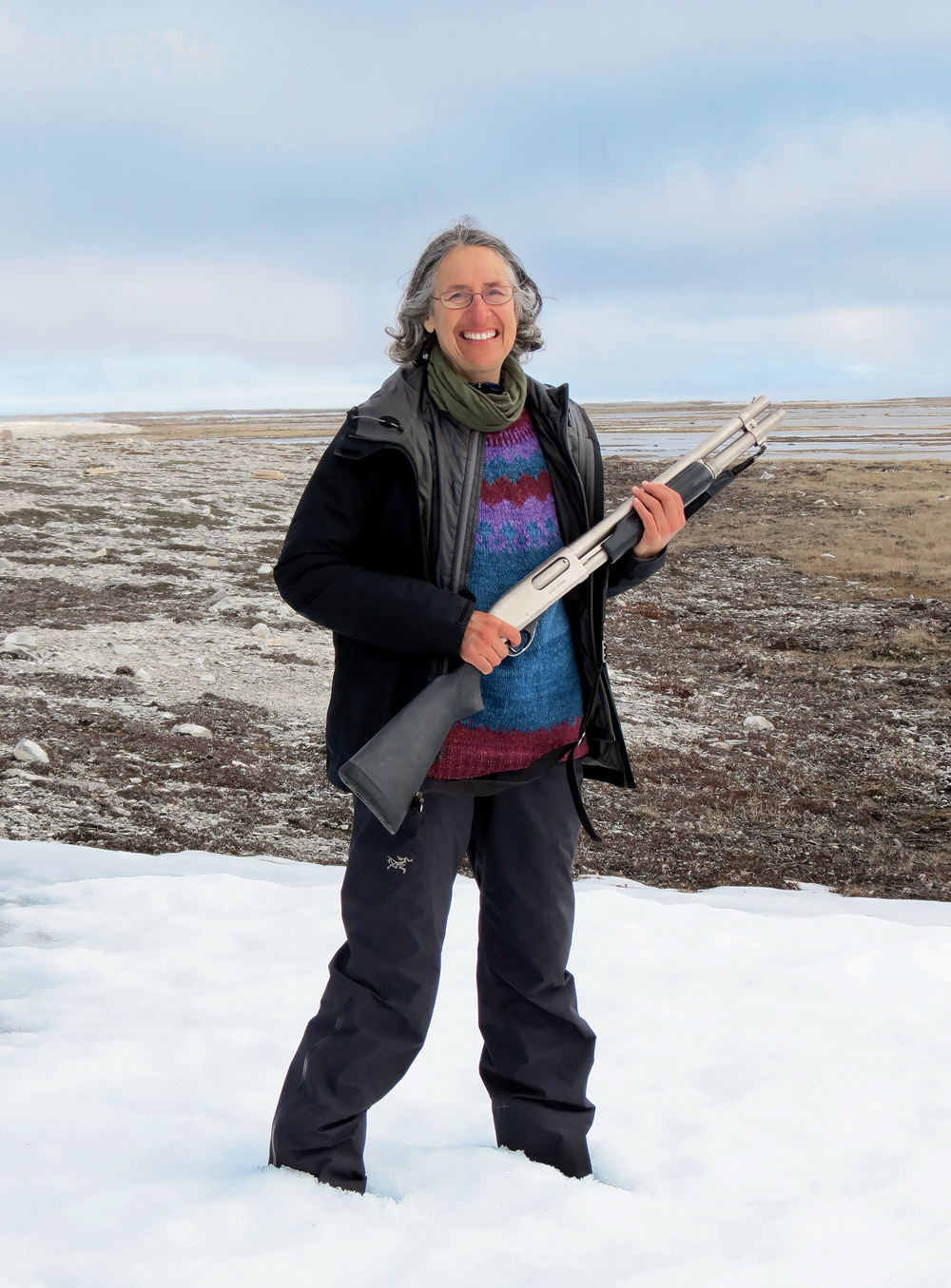
Deborah Cramer ’73 with one of the shotguns each team member carried at all times.
Photo © Naomi Man in ‘t Veld
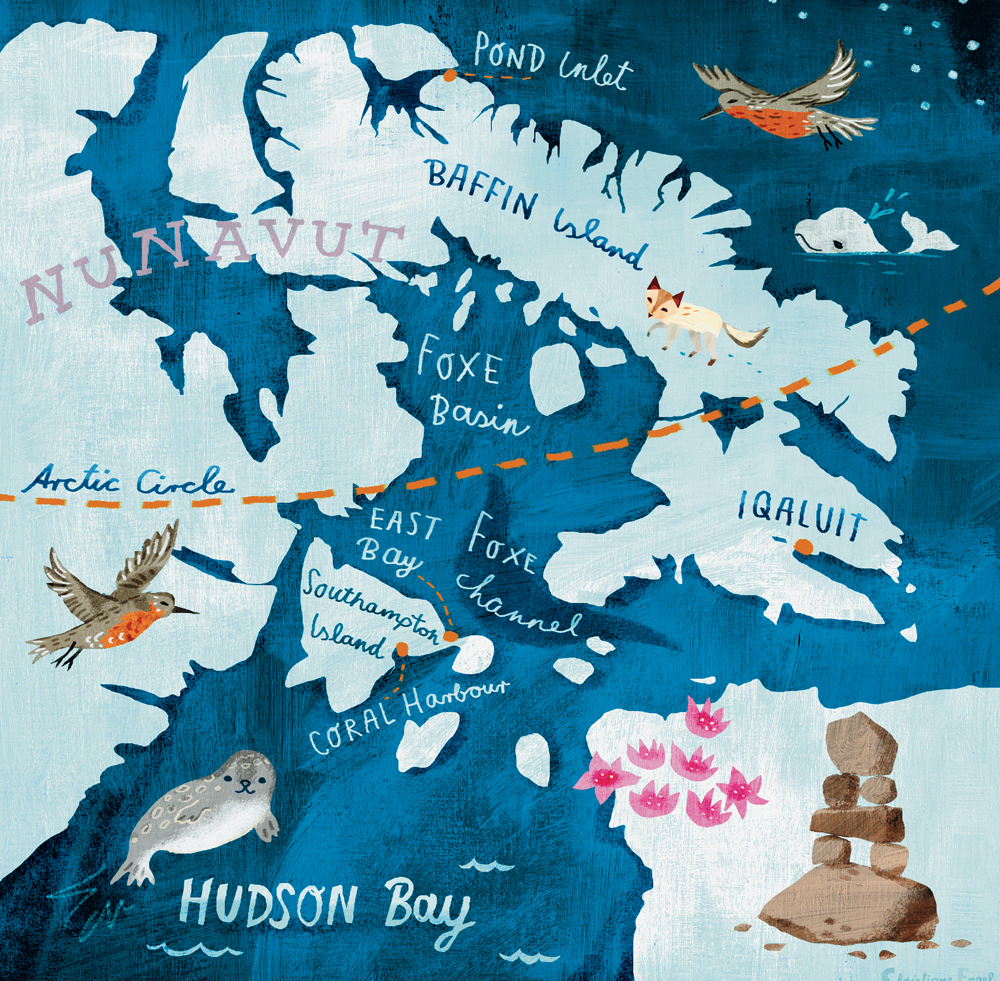
The East Bay shorebird research camp is on Southampton Island at the head of the Hudson Bay, three hours from Coral Bay by snowmobile.

Photo © Naomi Man in ‘t Veld
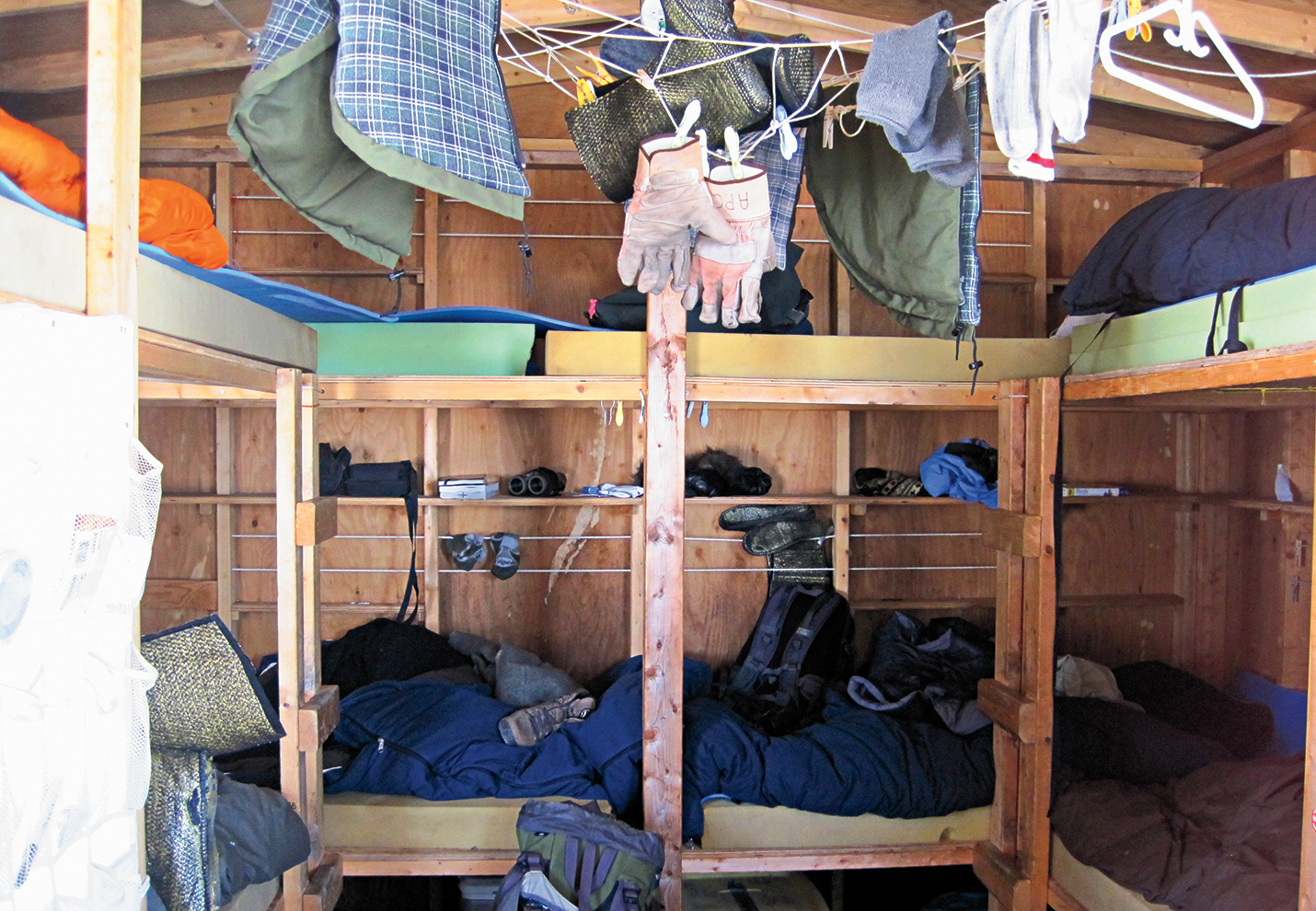
The team’s sleeping quarters
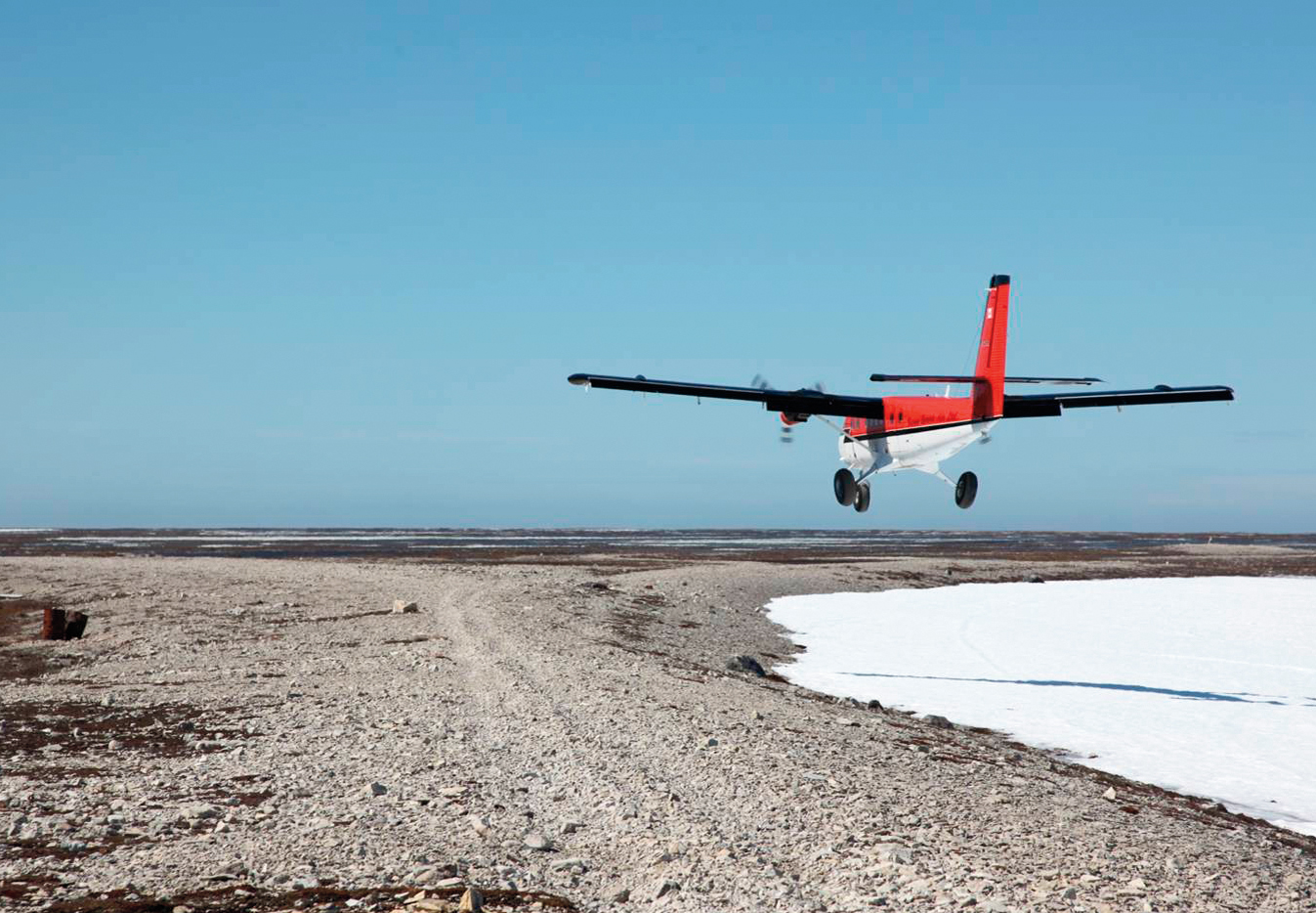
A Twin Otter landing on the tundra
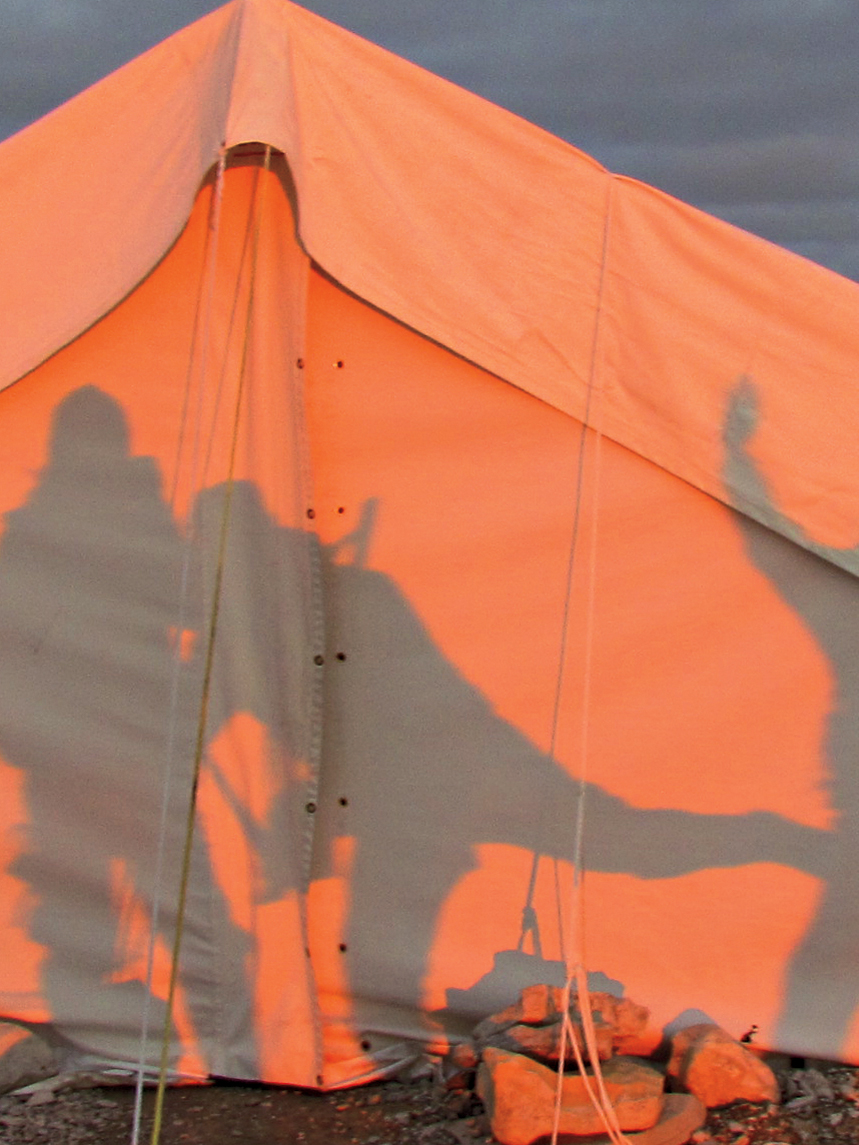
The team casting shadows in a tent

Looking east to the only elevation in the flat landscape near the camp
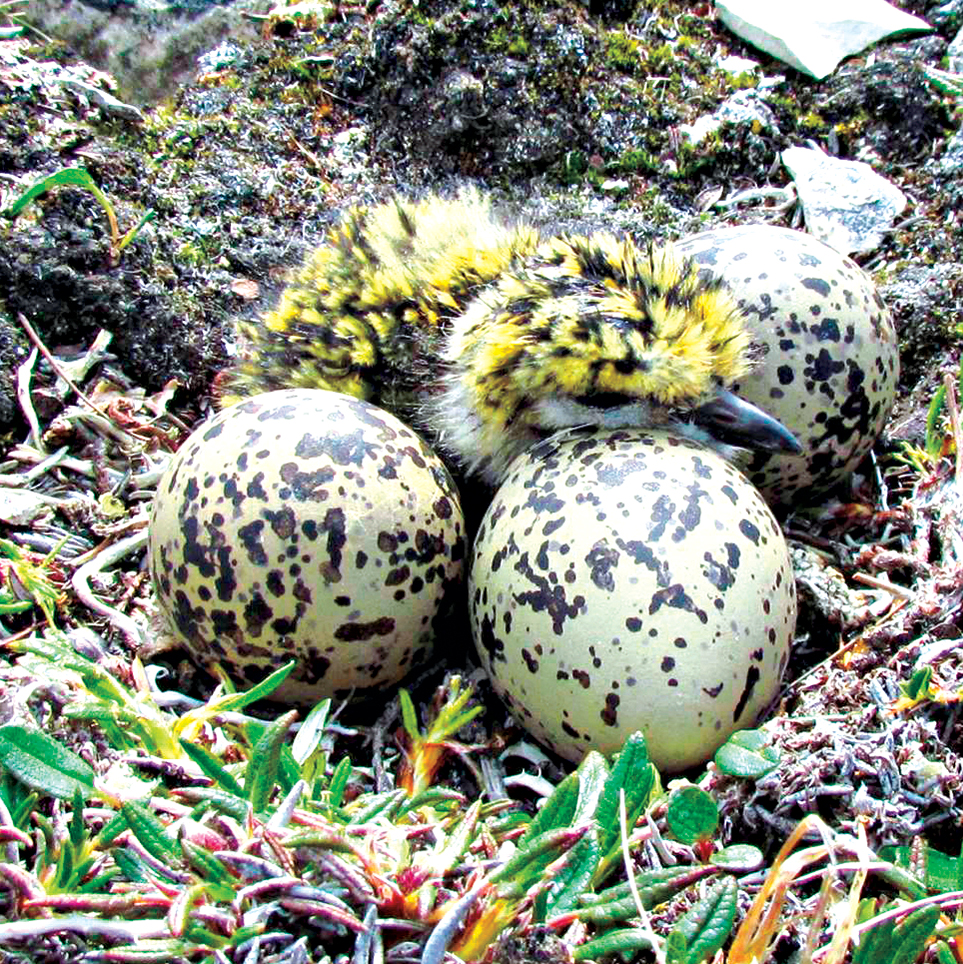
A black-bellied plover chick hatches
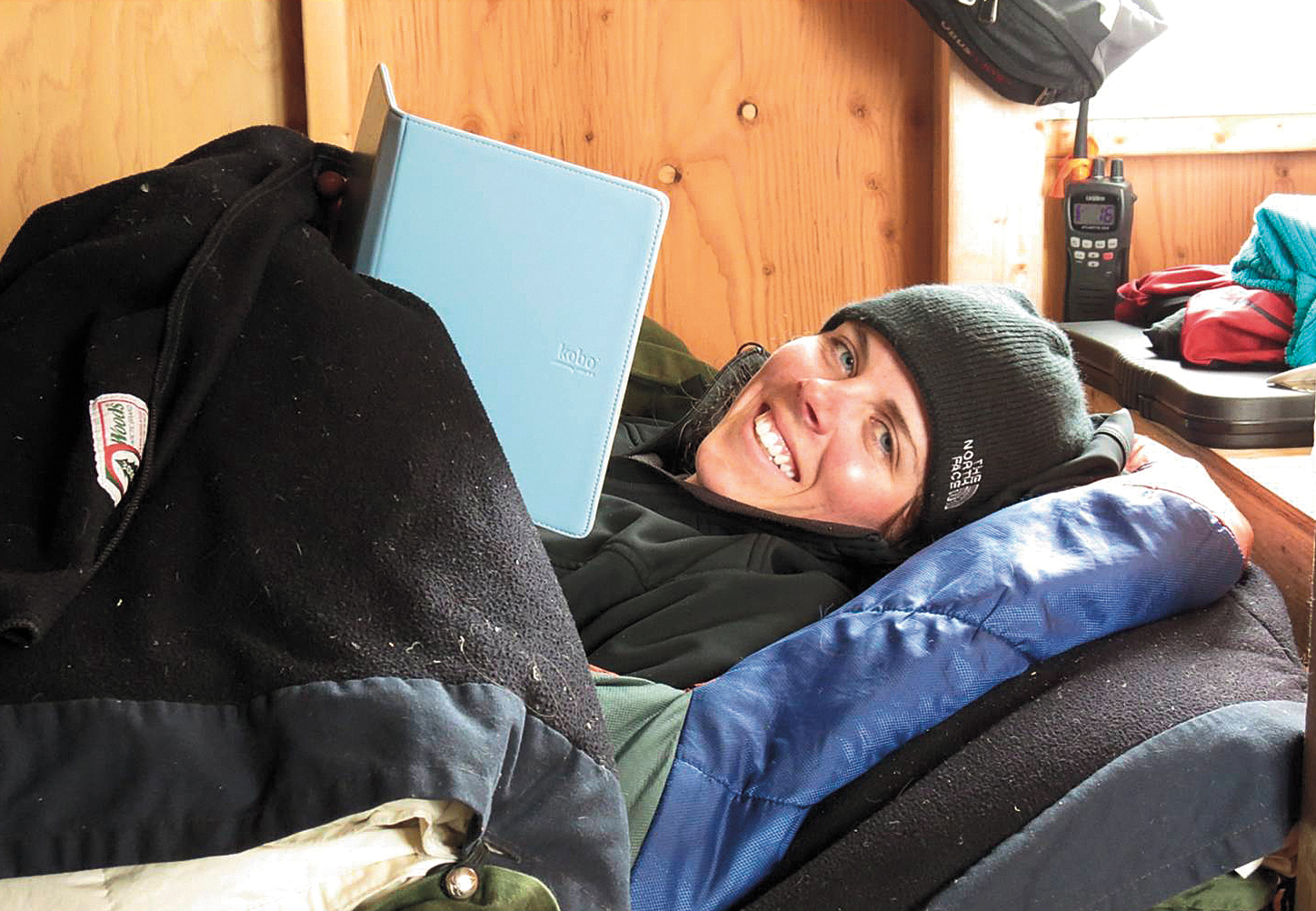
Team member Meagan McCloskey in bed bundled up for the night
Photo © Naomi Man in ‘t Veld
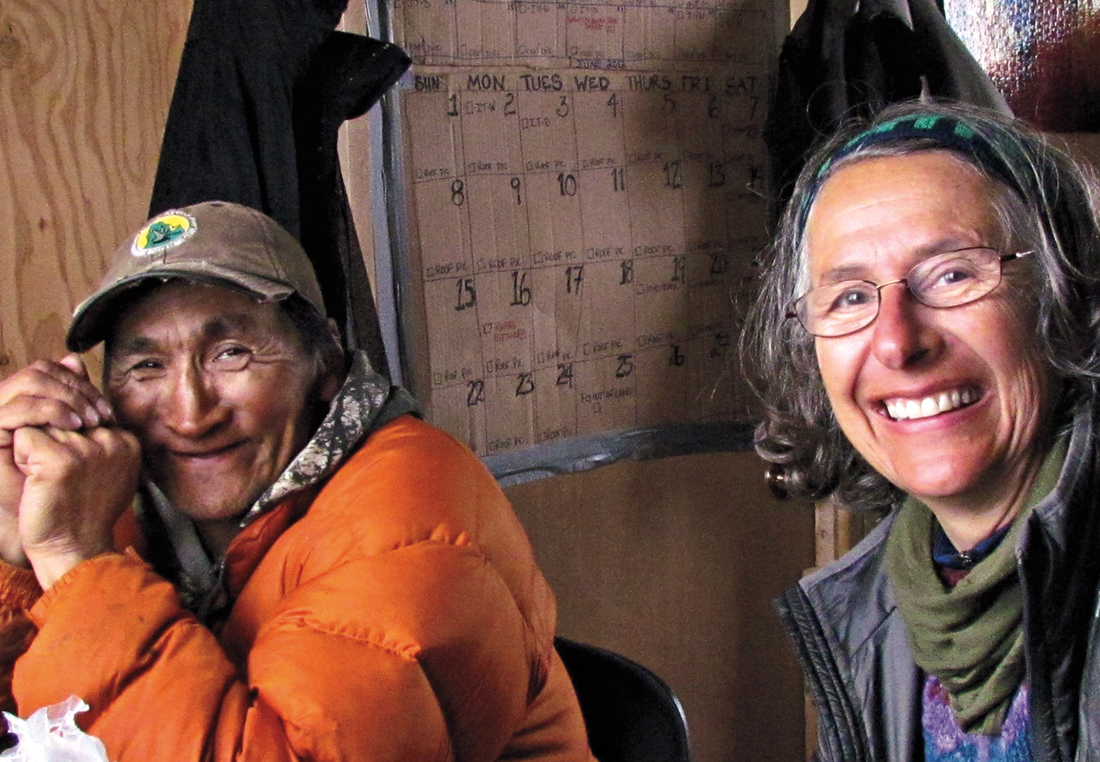
Deborah Cramer with Josiah Nakoolak, a resident of Southampton Island who knew weather, ice, and bears
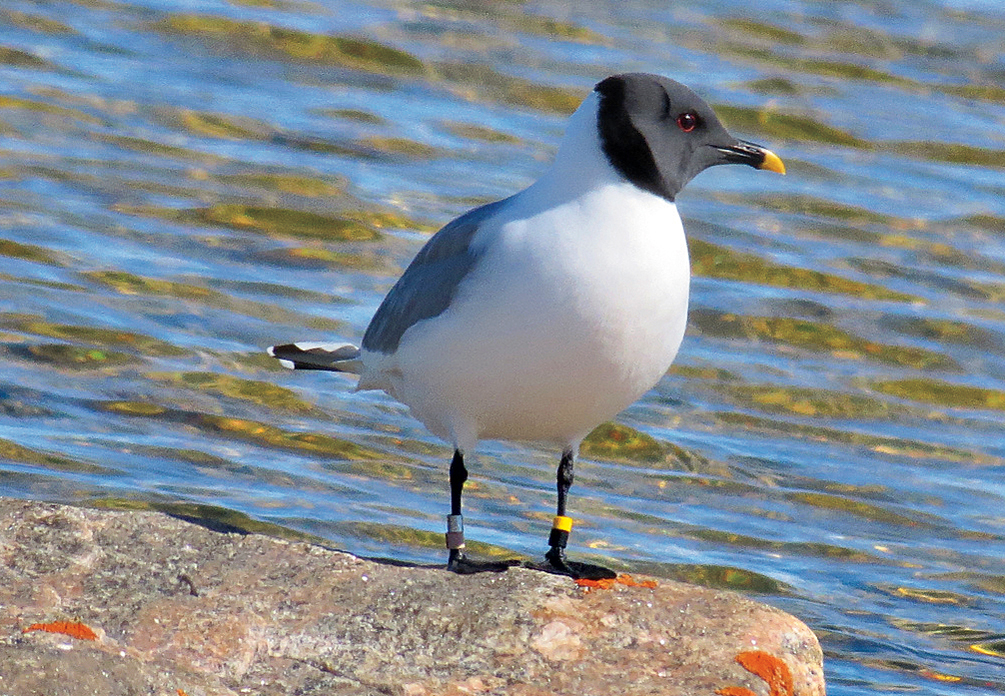
Photo © Naomi Man in ‘t Veld
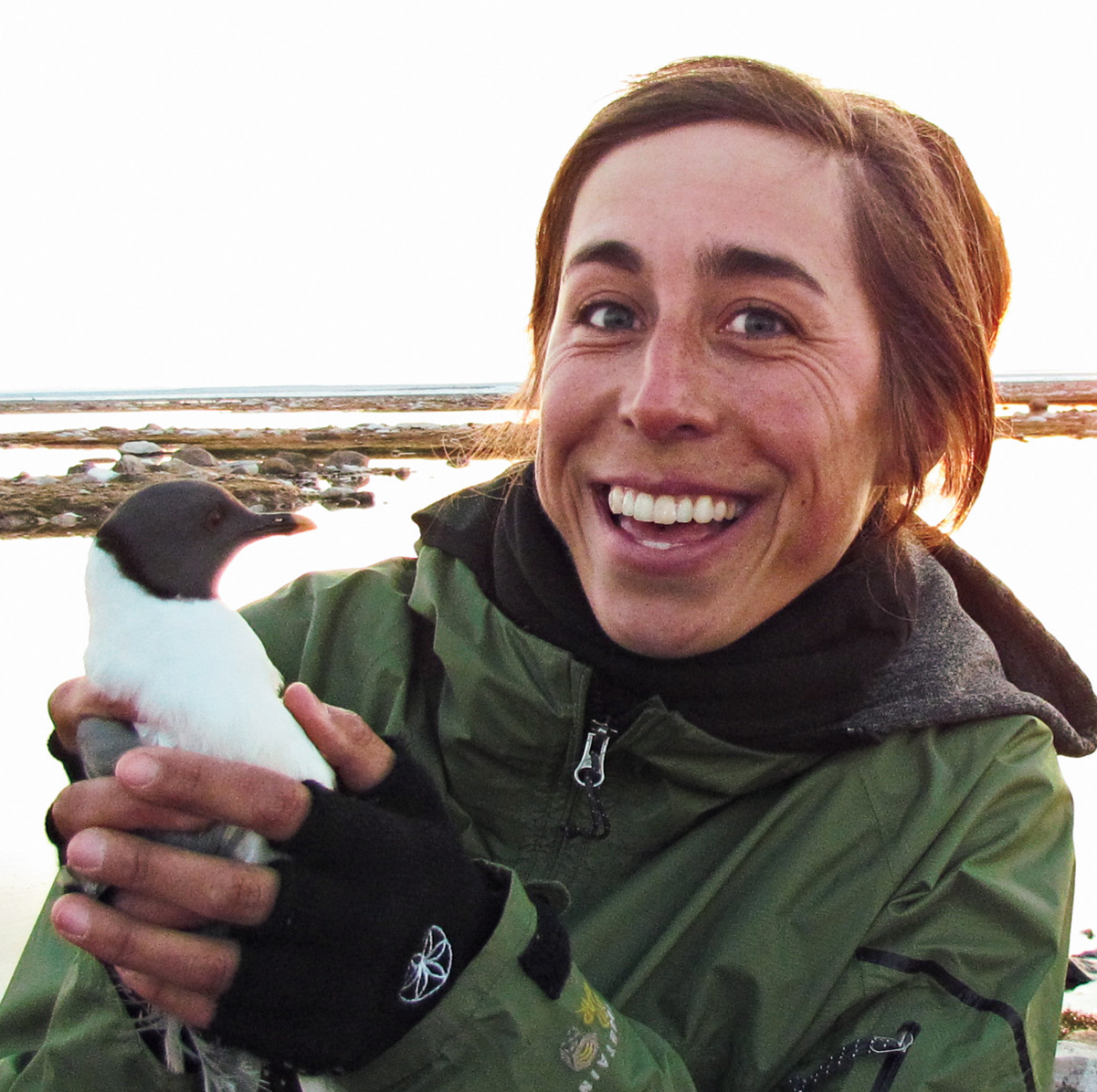
A Sabine’s gull held by researcher Naomi Man in ‘t Veld
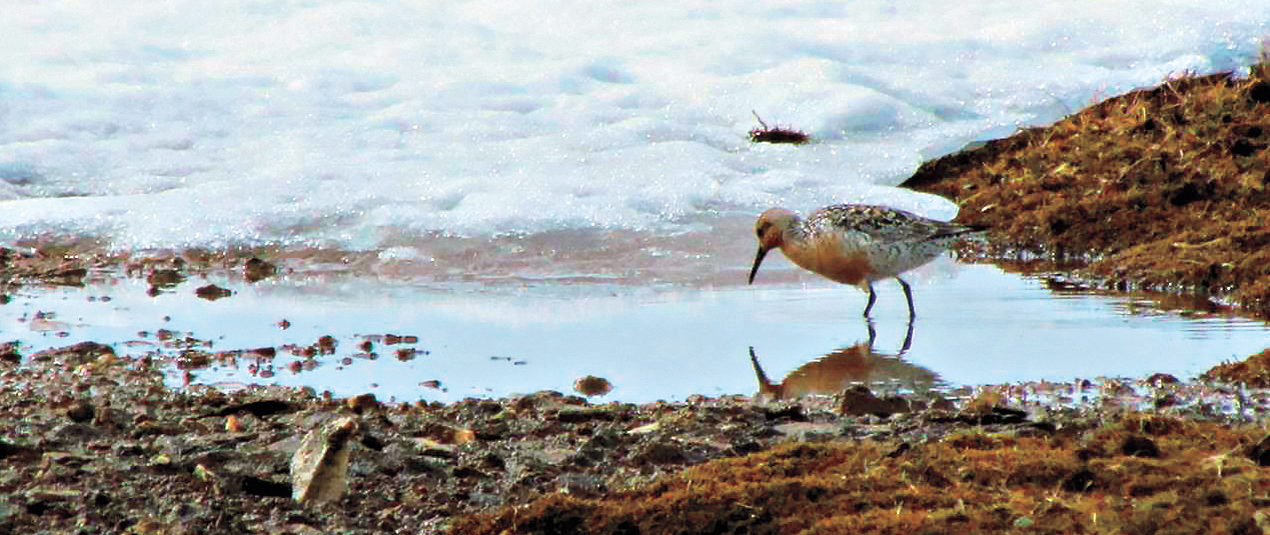
One of the first red knots to arrive in East Bay
Cleared to Fly
When the storm finally abates, the bush pilots are cleared to fly. The eider-duck team, and a few of our team, along with supplies for both camps, leave for East Bay in a DC-3 equipped with skis to land on the still-thick ice. The rest of us follow the next day in a Twin Otter. As we fly over the Foxe Basin, the ice is beginning to break up; the floes look like giant floating pancakes. After a three-hour flight, the camp comes into view—a few specks in a vast expanse of white. The plane circles, then lands, making a short, quick stop on a snowy gravel ridge, our runway. It is bright and sunny, almost balmy.
We take the next few days to finish setting up camp, organizing the kitchen tent where we’ll be cooking, piling snow into large barrels—our water supply—and gathering rocks to anchor the tents during storms. We practice shooting, firing at cans placed atop barrels. I begin with rubber bullets and progress up to slugs, and by the time I am finished, my marksmanship, thankfully, has substantially improved.
No one, however, wants to shoot endangered polar bears. If necessary, the team will scare them away with cracker shells, firing them to land in front of bears so the noise turns them away. I have no desire to experience this. As long as there is still sea ice, bears will be out hunting seal, but the ice is melting earlier each year, requiring us to carry guns everywhere—in camp, taking them into the cabin where we sleep, into the tent where we cook and eat, and even to the outhouse. We keep a bowl of slugs in the kitchen. Members of the team saw two bears the first day—one running across the ice as they crossed from the plane to the camp, and the other on the camp ridge, dead of starvation.
We have already found five or six red knots, including one carrying on its leg a tiny, colored flag with numbers. Observers saw this bird in the U.S. on Delaware Bay only a few weeks earlier.
Red Knots, Melting Snow
Southampton Island, 21,000 square miles, is sparsely inhabited. Its 950 residents live in Coral Harbour, at least three hours away from East Bay by snowmobile. In the quiet, we hear the coming of spring. Walking out on the ridge in an evening filled with the rosy light of a day whose light doesn’t dim into darkness, we hear trickling water as snow melts, filling nearby streams. The evening is filled with singing shorebirds who’ve weathered the storm.
We have already found five or six red knots, including one carrying on its leg a tiny, colored flag with numbers. Observers saw this bird in the U.S. on Delaware Bay only a few weeks earlier. It had flown 2,500 miles to get to the Arctic, fueled by a diet of tiny horseshoe crab eggs, and perhaps arrived before we did. It brought no baggage; we come loaded with several thousand pounds of gear and food. The birds are warmed by fat and feathers. At night, I stay warm with feathers as well, in a high-grade sleeping bag with at least three layers of thick down on both top and bottom.
Red knots are among the world’s longest long-distance fliers, undergoing astonishing physiological adaptations as they migrate. Their gizzards expand by as much as 50 percent as they fuel for a flight, enabling them to double their weight. Before departure, their gizzards shrink as the birds build up the necessary flight muscles. Once in the Arctic, they resize their hearts, lungs, and livers to withstand the rigors of breeding. Over and over again, these highly flexible birds transform their small bodies from powerhouse fliers to some of the animal kingdom’s most rapid energy consumers—a magnificent manifestation of endurance in a difficult world.
Eyes on the Nests
The East Bay shorebird study area encompasses 3,000 acres. We begin our work making two transects each day—one along the ridge, and one out to the bay—recording every bird we see, compiling a record that shows the numbers and arrival dates of birds returning from the south. On these long walks through the snow, we watch the birds’ courtship flights and territorial displays. As the snow softens, we sink, and are forced to crawl while holding onto our guns, GPSes, radios, and notebooks. It is not easy. One team member loses her radio in the snow, and an entire morning’s search doesn’t retrieve it.
The disappearing snow reveals a rocky landscape covered with deep ponds. We don waders and slog through, sometimes in water up to our thighs, taking care not to slip on ice still lining the pond bottoms. Purple saxifrage—a low tundra plant nestled in the gravel—and tiny willows only a few inches high begin to bloom, giving the grey rock a splash of color. When the birds have staked out their territories and begun incubating, the team looks for nests and monitors the eggs until they hatch, enabling researchers to track the breeding success of shorebirds in East Bay year after year. We also track how quickly the snow cover recedes, the density and hatching dates of insects—a large part of the chicks’ diet—and the abundance of predators, data which, over the years, will construct a picture of this changing world. Out near the shore, Arctic terns and Sabine’s gulls build nests, dive-bombing us if we come too close. Pacific loons, whose eerie cries begin to fill our nights, nest on the ponds’ small, grassy islands. Ruddy turnstones, whose distinctive calico pattern blends well with the tundra, lay equally well-camouflaged eggs. When I gaze long enough at speckled tundra rocks, they occasionally materialize into eggs.
Shorebirds are solitary nesters. In each 1½ square mile plot, we may find only a few nests. We pair off to search and walk all day, sometimes for seven or eight hours. Occasionally, we radio each other with news of what we find.
Red knots and black-bellied plovers are particularly solitary, nesting inland on the ridges, few and far between. If a black-bellied plover flushes from its nest, we may spend as many as two or three hours awaiting its return. The birds, adept at escaping predators, create distractions, one parent running along the tundra, feigning a broken wing, while the other sneaks back to a nest whose location we’ve now lost in a sea of gravel.
The knots are particularly elusive. We hear them singing, but can’t find their eggs. They sit tight, not budging unless they risk being stepped on. If there are nests, we may be walking right by them. Our days are quiet, filled with singing birds, geese flying overhead, and the occasional sandhill crane calling in the distance. We are alone, but far from lonely, finding company in each other and comfort in the persistence of life and birds incubating eggs in this spare, harsh place.
Severe Summer
The summer is not going particularly well. We are besieged by one storm after another: blinding snow, sleet, and winds so high we lean into them without falling—an odd and scary sensation. We don’t know exactly how cold it is. During the winter, polar bears and Arctic foxes dismantled our weather station; the now wildly unreliable thermometer reads minus 180 degrees. If the spring continues to tarry and the birds can’t nest, or their nests fail, there won’t be time to try again.
When we are soaked, achingly cold, and there’s no visibility, we return to camp. Members of the crew knit: hats, mittens, baby blankets. I write up my notes and study field guides. We huddle in the cooking tent, gratefully sharing one of the researcher’s treats of French-pressed coffee and gourmet chocolate. Having cooked considerably more meals than everyone on this team combined, I’m happy I can help here. With our wide range of spices, we make Indian, Chinese, and Mexican dinners, French seafood stews (with canned crab or smoked oysters), and chili. We apply our creativity to the possibilities of cabbage. From the eider-duck researchers we learn how to make baguettes—it takes hours for the dough to rise—and cobble together enviable fruit crisps.
Although we live in close quarters, sleeping head to toe in bunks in our tiny cabin, the members of this team both look out for each other and at the same time respect each other’s privacy. My life is in the hands of people I hadn’t known, in a place I can’t walk away from, and I can think of no better company than these highly skilled and lovely young women who have welcomed me into this difficult place.
Sometimes, as the sun dips toward the horizon in the season’s few hours of twilight and dawn, the sky clears. We walk outside, into the silence, onto the unending tundra beneath the vast expanse of Arctic sky. The barrage of information to which I’m accustomed back home is absent here, and in the stillness, it seems as if I can feel the Earth breathing. Sometimes, I’ll find Josiah gazing out across the snow at nothing I can see, in a landscape I can’t read. Eventually, a spot of white, a tiny bit more yellow than the snow, materializes into a fast-running polar bear. He gauges its speed, direction, and intention, deciding whether to give chase.
Pacific loons, whose eerie cries begin to fill our nights, nest on the ponds’ small, grassy islands. Ruddy turnstones, whose distinctive calico pattern blends well with the tundra, lay equally well-camouflaged eggs.
On the Edge of Danger
The calm, soft light of the midnight sun is deceiving. For the birds, life can be snuffed out in an instant. Herring gulls harass a loon, and in a flash, steal all its eggs. A jaeger swoops in, snatches a sandpiper, and eats it. I never see Arctic foxes raiding nests, but I often observe them trotting across the tundra, carrying eggs to a cache. We ourselves take precautions, building redundancies into our protocols and equipment. We need those redundancies here, where what is safe and unthreatening one minute can dissolve into grave danger the next.
One overcast rainy morning, when the wind dies and the clouds seem to lift, the team heads out, two of us to a distant plot. Winding our way through patches of grass that may contain dunlin nests, we are suddenly enveloped by thick fog. In a circumstance like this, we’d normally take the fastest, most direct route back to camp, but when the team entered nest data into our shared GPSes the night before, someone had inadvertently erased the camp coordinates. Further, the batteries on our GPS and radio are losing their charge in the cold. We slowly retrace our steps, backtracking along the long, circuitous route we’d walked earlier.
A faint silhouette appears in the mist only a few feet away; a caribou startles us. The ridges that we use as landmarks have vanished: Without the GPS, I have no idea where I am or which way I’m facing. If I had to get us back, this day might be our last. My partner, however, is calm. As we walk, she recognizes clumps of grass where she’d sought out nests, and a small lake we’d crossed earlier. She orients herself by a Herring gull’s nest taking shape on a rock pile in the fog, and then by a tundra street sign, an inukshuk, a stone cairn Inuit built to aid navigation or mark a hunting ground or cache. About where she expects, the camp ridge emerges, and even though we can’t see the cabins, we know they’re there. When I return, I am relieved and shaken.
The Arctic’s Changing Face
The field season is almost half over. Summer is passing. In a brief interlude when the weather clears and the bush pilots are flying again, the eider camp departs, taking me with them.
Increased extreme weather can characterize global warming. The Arctic is warming three to four times faster than the rest of the world, but this summer is the worst in the shorebird program’s history. Storms and high winds continue until my team leaves. They find few shorebird nests, and few eggs that hatch. Cold, however, may not be the birds’ ultimate challenge here. As the planet warms, and polar sea ice melts, what we have come to understand as the Arctic is slowly disappearing, and the birds, already nesting at the northern edge of Earth’s most northern lands, may be shut out of their tundra home.
Field scientists on the ground season after season, year after year, counting birds, nests, eggs, and chicks, document the trends, depicting for us a distant realm shaking off the cold. I am grateful for their kindness, their generosity, and their courage, and for the privilege of entering this unfamiliar world where I find my own new bearings and greater understanding of the meaning of endurance. As the Arctic summer fades, the knots begin their long journey south. I will continue to follow them, heading out again, with another crew, to another remote field camp, at the southern end of Hudson Bay, where shorebirds gather at the end of the summer to refuel for the migration ahead. If any red knot chicks hatch this season, I’m hoping to meet them there.




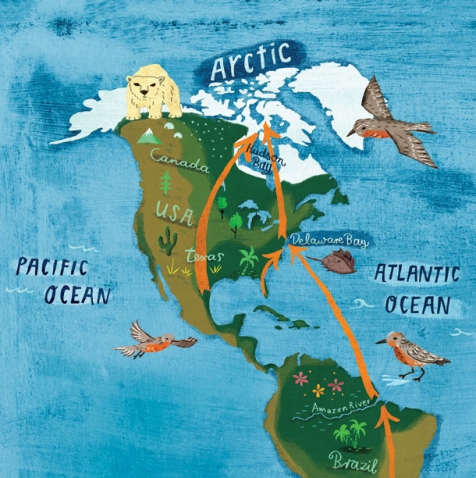

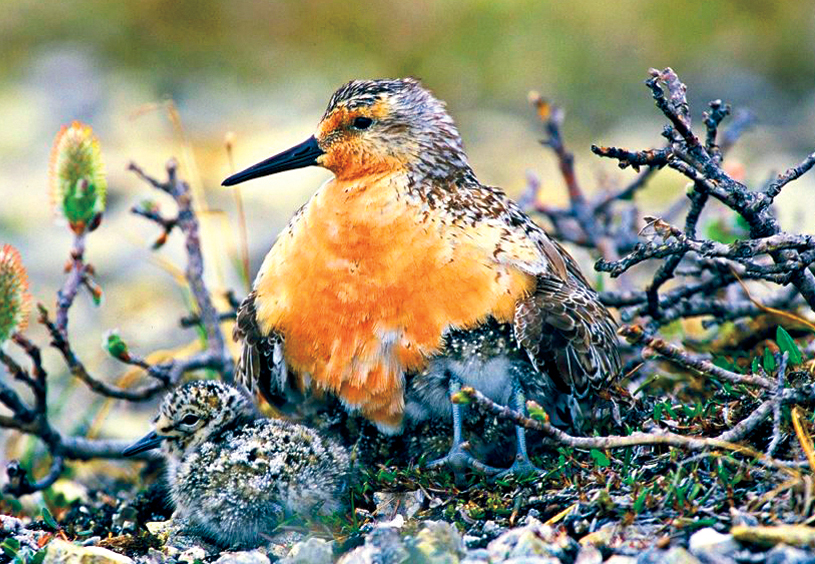

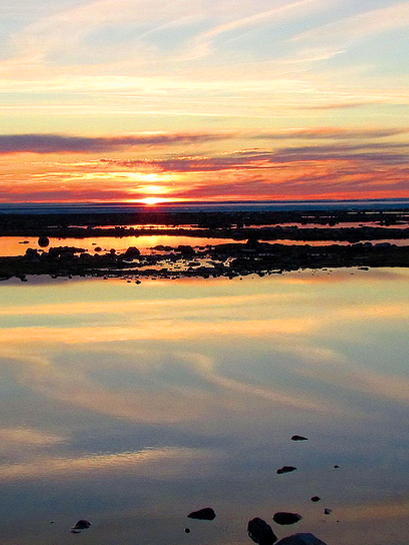


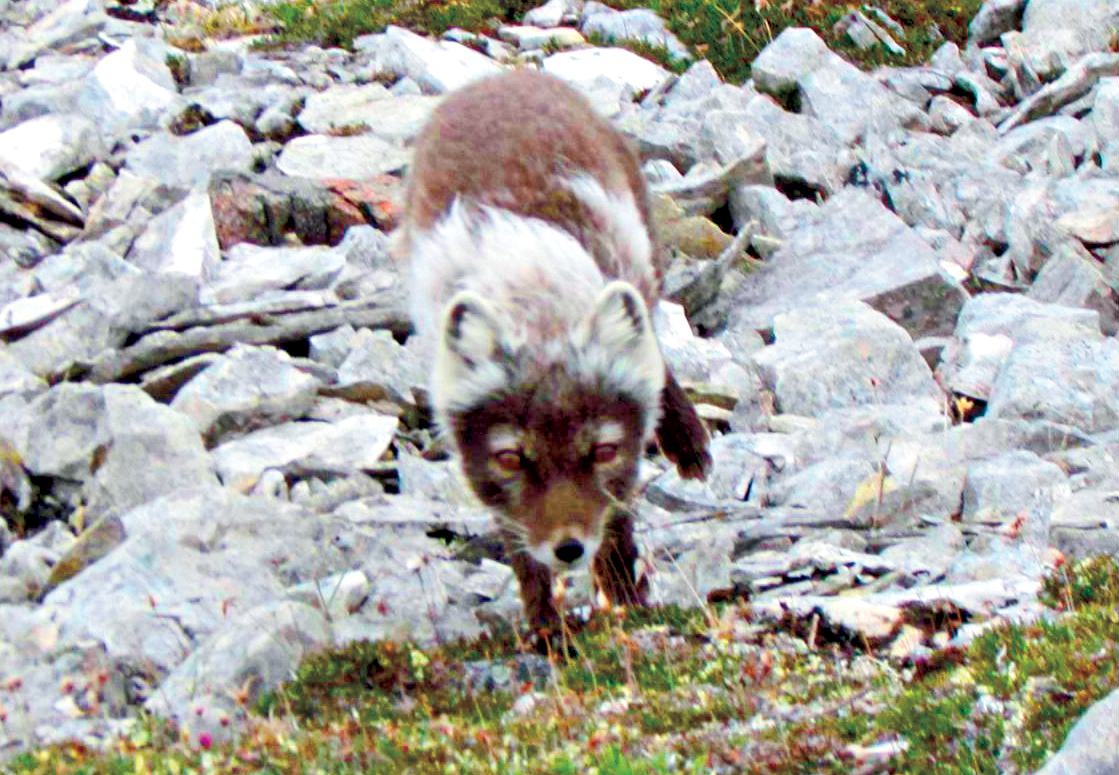

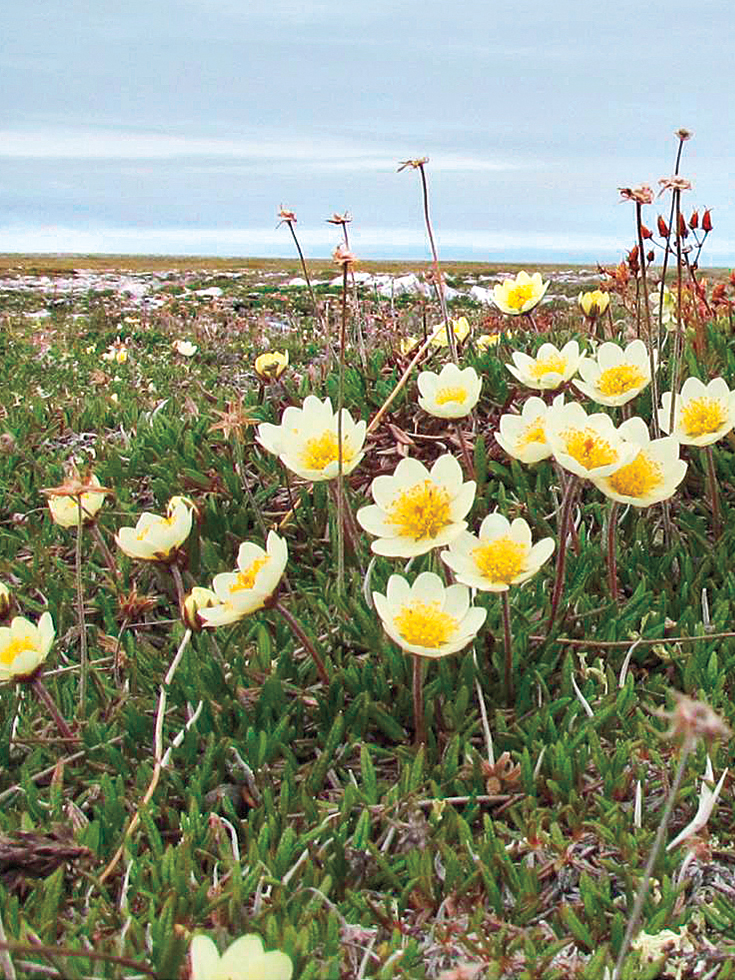
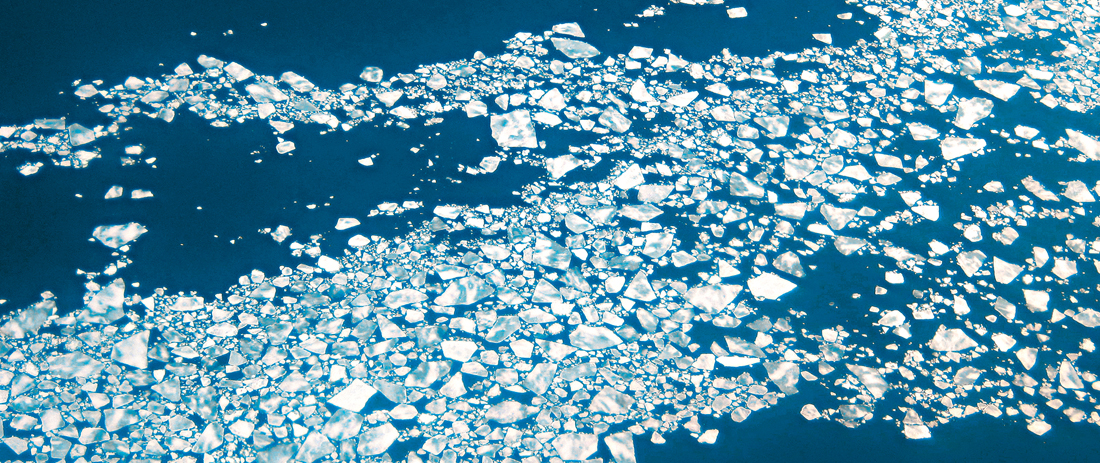


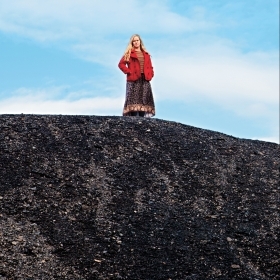

We ask that those who engage in Wellesley magazine's online community act with honesty, integrity, and respect. (Remember the honor code, alums?) We reserve the right to remove comments by impersonators or comments that are not civil and relevant to the subject at hand. By posting here, you are permitting Wellesley magazine to edit and republish your comment in all media. Please remember that all posts are public.